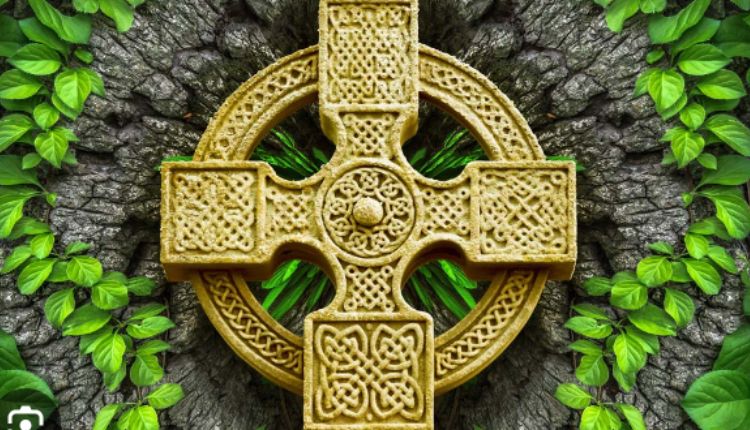Unveiling The Mysteries Of Celtic Religion: Ancient Traditions And Beliefs
Introduction:
The Celtic civilization, with its rich and diverse culture, left behind an enduring legacy of fascinating religious beliefs. Celtic religion encompassed a complex tapestry of rituals, deities, and practices that were deeply intertwined with nature and the cycle of life. In this article, we embark on a journey to explore the depths of Celtic spirituality, shedding light on its unique aspects and uncovering the profound impact it had on the lives of ancient Celts.
I. Origins And Overview Of Celtic Religion
The origins of Celtic religion can be traced back to the Iron Age, around 800 BCE. The Celts, a group of Indo-European peoples, inhabited regions of modern-day Europe, including the British Isles, Gaul (present-day France), Iberia, and parts of Central Europe. Their religious practices were heavily influenced by their deep connection to the natural world, which shaped their belief systems and rituals.
Central Deities and Beliefs:
II. The Pantheon Of Celtic Deities
Celtic religion featured a pantheon of deities representing various aspects of nature, human life, and cosmic forces. Among them were the powerful mother goddesses like Danu and Brigid, associated with fertility, motherhood, and wisdom. The war gods, such as Lugh and Morrigan, were revered for their martial prowess and protection. These deities played pivotal roles in the lives of the Celts, with each region and tribe having its unique interpretations and local gods.
III. Rituals And Worship
The Celts held a myriad of rituals to communicate with their deities and seek blessings. Their religious practices often revolved around seasonal changes, agricultural cycles, and celestial events. Sacred sites like Stonehenge in England and the Hill of Tara in Ireland served as places of worship and gatherings for the community. Rituals involved offerings, sacrifices, and bonfires, all meant to appease the gods and maintain harmony with the natural world.
IV. Druids: Guardians Of Wisdom
The Celtic religious landscape was significantly influenced by the Druids, a priestly class that held a revered position in society. These wise men and women served as mediators between the people and the deities, possessing vast knowledge of the natural world, astronomy, and healing. The Druids’ influence extended beyond religious matters, as they also served as advisors, judges, and custodians of oral traditions.
V. Festivals And Celebrations
Celtic religion was punctuated by vibrant festivals that celebrated the changing seasons and significant life events. Beltane marked the beginning of summer with fertility rites, while Samhain, the precursor of modern Halloween, was a time to honor ancestors and the spirits of the deceased. These festivities offered the Celts a chance to come together as a community and express their spirituality through music, dance, and feasting.
Conclusion
The enigmatic world of Celtic religion continues to captivate the imagination, providing valuable insights into the spiritual practices of ancient societies. The Celts’ deep reverence for nature and their interconnectedness with the divine offer valuable lessons even in the modern era. By understanding and appreciating the complexities of their belief system, we gain a deeper appreciation for the rich tapestry of human spirituality and the diverse ways in which ancient cultures sought to make sense of the world around them.
FAQs:
- What role did nature play in Celtic religion? (Word Count: 150)
Nature played a central role in Celtic religion, serving as the foundation of their belief system. The Celts believed that the natural world was imbued with spirits and divine entities, and thus, they held a profound reverence for the elements, forests, rivers, and mountains. Nature was not merely a backdrop but an integral part of their spirituality, and their rituals often revolved around seasonal changes and the cycles of life found in the natural world.
- How did Celtic religion influence modern practices? (Word Count: 150)
Despite the decline of the ancient Celtic civilization, traces of Celtic religious beliefs and practices can still be found in various aspects of modern culture. Many contemporary pagan and neo-pagan traditions draw inspiration from Celtic spirituality, incorporating elements like the celebration of solstices and equinoxes, reverence for nature, and the worship of deities associated with Celtic pantheons. Additionally, some cultural practices, such as St. Patrick’s Day, have roots in pre-Christian Celtic celebrations.
In conclusion, Celtic religion stands as a testament to the deep-rooted spiritual connection the ancient Celts shared with the natural world. Their diverse pantheon of deities, sacred rituals, and wise Druids shaped a vibrant religious tapestry that continues to intrigue and inspire to this day. By unraveling the mysteries of Celtic spirituality, we gain a deeper understanding of the intricate web that connects humanity with the divine and the profound significance of our relationship with the world around us



